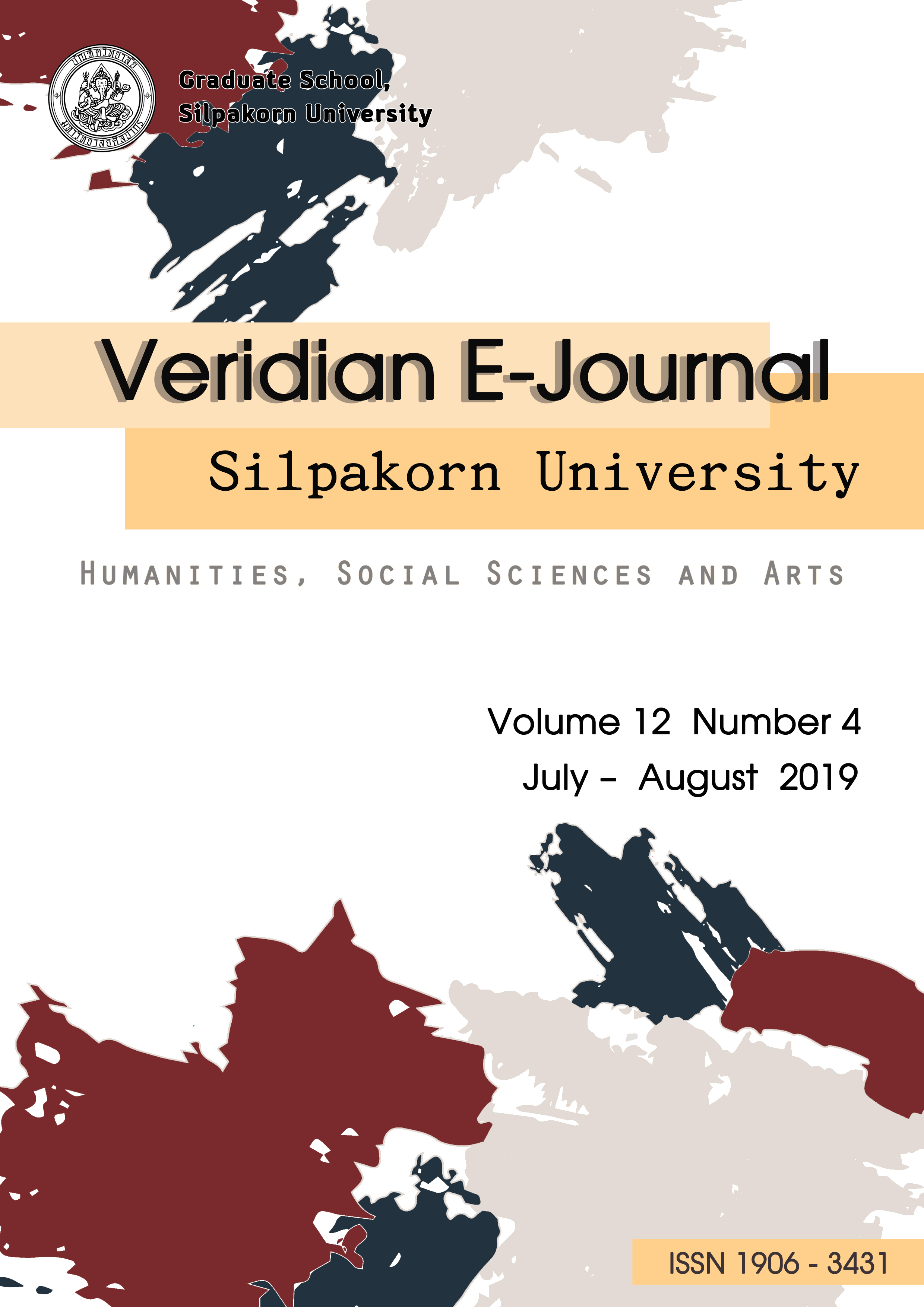การจัดการเรียนรู้แบบร่วมมือเทคนิค STAD โดยเน้นการใช้ตัวแทนเพื่อส่งเสริมผลสัมฤทธิ์ทางการเรียนและความสามารถในการแก้ปัญหาทางคณิตศาสตร์ เรื่อง ความสัมพันธ์และฟังก์ชัน ของนักเรียนชั้นมัธยมศึกษาปีที่ 4 (The STAD Cooperative Learning Technique Emphasizing on Representation for Enhance Learning Achievement and Mathematical Problem Solving Ability in Relations and Functions of Mathayomsuksa 4 Students )
Main Article Content
บทคัดย่อ
การวิจัยครั้งนี้มีความมุ่งหมาย 1) เพื่อเปรียบเทียบผลสัมฤทธิ์ทางการเรียน เรื่องความสัมพันธ์และฟังก์ชัน ของนักเรียนระดับชั้นมัธยมศึกษาปีที่ 4 ที่เรียนโดยการจัดการเรียนรู้แบบร่วมมือเทคนิค STAD โดยเน้นการใช้ตัวแทน กับเกณฑ์ร้อยละ 75 2) เพื่อเปรียบเทียบความสามารถในการแก้ปัญหาทางคณิตศาสตร์ เรื่องความสัมพันธ์และฟังก์ชัน ของนักเรียนระดับชั้นมัธยมศึกษาปีที่ 4 ที่เรียนโดยการจัดการเรียนรู้แบบร่วมมือเทคนิค STAD โดยเน้นการใช้ตัวแทนกับเกณฑ์ร้อยละ 70 กลุ่มตัวอย่าง ได้แก่ นักเรียนชั้นมัธยมศึกษาปีที่ 4 ภาคเรียนที่ 2 ปีการศึกษา 2561 โรงเรียนปทุมเทพวิทยาคาร จังหวัดหนองคาย จำนวน 1 ห้องเรียน จำนวน 39 คน ซึ่งได้มาจากการสุ่มแบบกลุ่ม (Cluster random sampling) โดยใช้ห้องเรียนเป็นหน่วยสุ่ม เครื่องมือที่ใช้ในการวิจัย ได้แก่ แผนการจัดการเรียนรู้แบบร่วมมือเทคนิค STAD โดยเน้นการใช้ตัวแทน แบบทดสอบวัดผลสัมฤทธิ์ และแบบทดสอบวัดความสามารถในการแก้ปัญหาทางคณิตศาสตร์ การวิเคราะห์ข้อมูลใช้ ค่าร้อยละ (Percentage) ค่าเฉลี่ยเลขคณิต (Arithmetic mean) ส่วนเบี่ยงเบนมาตรฐาน (Standard Deviation) และสถิติ t-test for one sample]
ผลการวิจัยปรากฏว่า
1) ผลสัมฤทธิ์ทางการเรียน เรื่องความสัมพันธ์และฟังก์ชัน ของนักเรียนระดับชั้นมัธยมศึกษาปีที่ 4 ที่เรียนโดยการจัดการเรียนรู้แบบร่วมมือเทคนิค STAD โดยเน้นการใช้ตัวแทน สูงกว่าเกณฑ์ร้อยละ 75 อย่างมีนัยสำคัญทางสถิติที่ระดับ .05
2) ความสามารถในการแก้ปัญหาทางคณิตศาสตร์ เรื่องความสัมพันธ์และฟังก์ชันของนักเรียนระดับชั้นมัธยมศึกษาปีที่ 4 ที่เรียนโดยการจัดการเรียนรู้แบบร่วมมือเทคนิค STAD โดยเน้นการใช้ตัวแทน ไม่เป็นไปตามเกณฑ์ร้อยละ 70 อย่างมีนัยสำคัญทางสถิติที่ระดับ .05
The purposes of this research were (1) to compare the mathematical learning achievement on relations and functions of Mathayomsuksa 4 students learned by using the STAD cooperative learning technique emphasizing on representation with 75 percent criteria and, (2) to compare the ability to solve mathematical problems on relations and functions of Mathayomsuksa 4students learned by using the STAD cooperative learning technique emphasizing on representation with 70 percent criteria. The study samples were 39 students in Mathayomsuksa 4 at second semester of academic year 2018 of Pathumthep Witthayakarn School, Nong Khai province. The sample selected randomly through cluster random sampling using the classroom as a random unit. The research instruments were lesson plan based on the STAD cooperative learning technique emphasizing on representation, the mathematical learning achievement test and mathematics problem solving ability test. The data analysis were percentage, Arithmetic mean, Standard Deviation and t-test for one sample.
The results of this research were as follow:
1) The mathematics achievement in relations and functions of Mathayomsuksa 4 students learned by using the STAD cooperative learning technique emphasizing on representation higher than 75 percent criteria at .05 statistical significance levels.
2) The ability to solve mathematical problems in relations and functions of Mathayomsuksa 4 students learned by using the STAD cooperative learning technique emphasizing on representation does not meet 70 percent criteria at .05 statistical significance levels.

